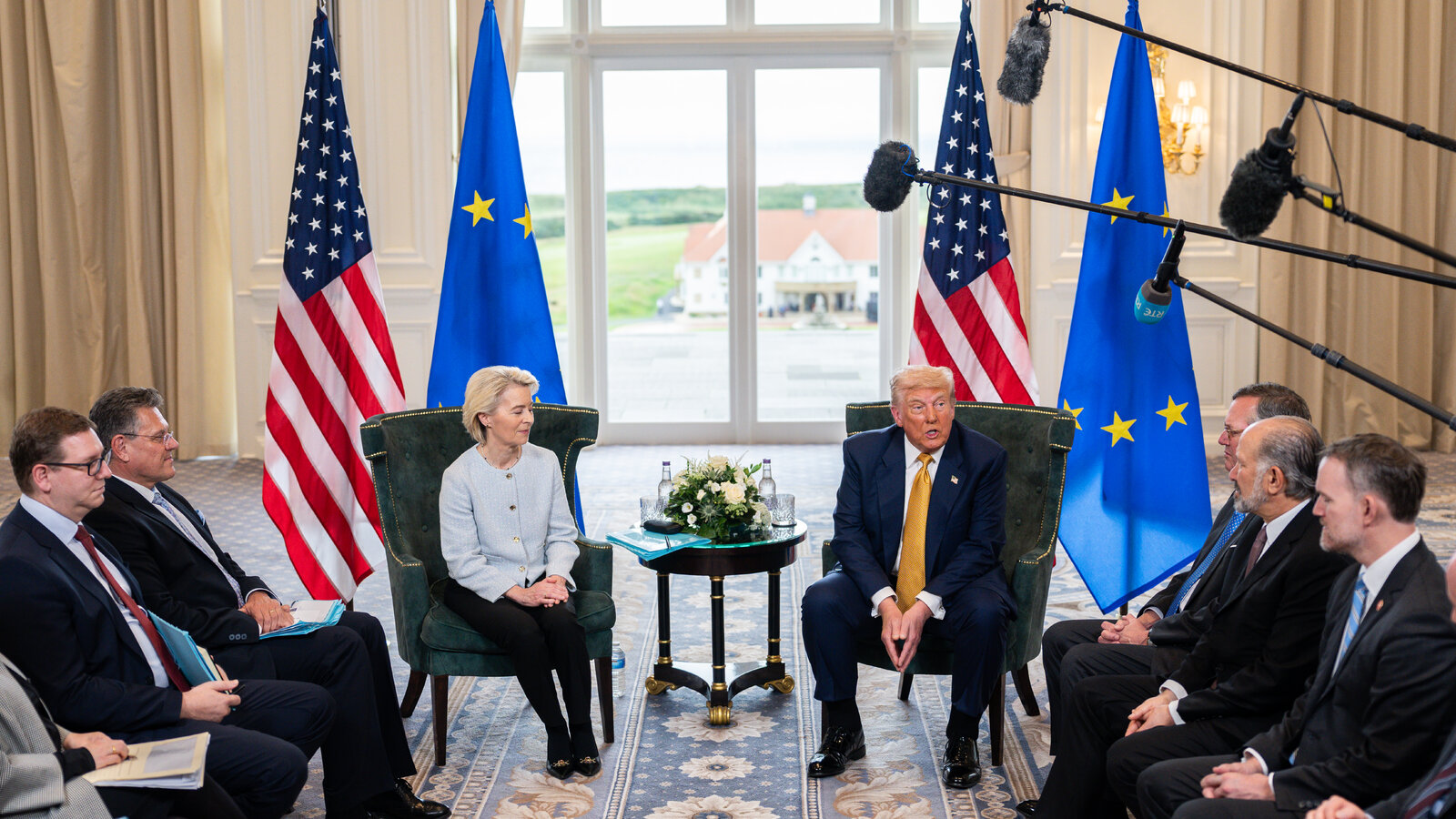The two leaders’ account of the deal differed on the day, notably on pharma, causing concern that drug producers in Europe could end up being priced out of the U.S. market entirely.
In another key clause, the joint statement confirms that the U.S. will lower tariffs on autos and auto parts in most cases to 15 percent from 27.5 percent — but only after the EU formally introduces legislation to “eliminate tariffs on all U.S. industrial goods.” The EU now has a 10 percent levy on car imports.
The European Commission will initiate that legislation this month, Šefčovič said, ensuring that Washington will reduce tariffs on European autos effective Aug. 1. The reduction in U.S. tariffs on European autos would be retroactive, he added.
Market access
The bloc will expand market access for U.S. agricultural goods that are not sensitive for its own market. The U.S., meanwhile, commits to exempting aircraft and parts as well as cork and generic drugs from higher tariffs, applying its most-favored nation tariff to those imports.
Washington and Brussels will join forces to tackle overproduction on steel and aluminum, and will explore the possibility of setting tariff-rate quotas. This was a key request from the European side, to avoid its steel and aluminum exports facing a 50 percent tariff. The EU and the U.S. will also team up against countries — such as China — that are imposing export restrictions on critical minerals.
The European Commission will also explore providing “additional flexibilities” in the implementation of the EU’s carbon border tax to American companies, as well as ensure that the EU’s sustainability reporting obligations (CSRD) or the supply chain oversight rules (CSDDD) “do not pose undue restrictions on transatlantic trade.”


